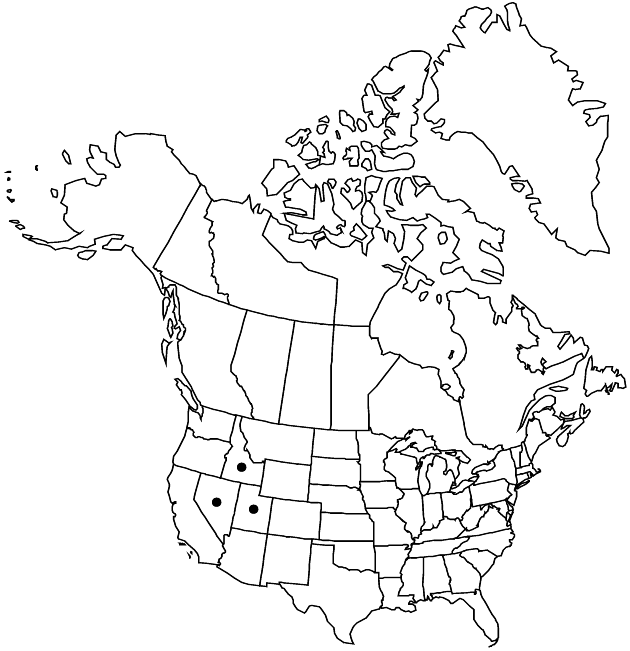Erigeron jonesii
Brittonia 6: 166. 1947.
Perennials, 10–25 (–40) cm; taprooted, caudices simple or branched, retaining old leaf-bases. Stems (purplish proximally) decumbent-ascending, moderately hirsute (hairs deflexed), sometimes minutely glandular distally. Leaves basal (persistent) and cauline; basal (erect) blades (3-nerved) oblanceolate to spatulate or subelliptic, 20–80 (–180) × 3–13 mm (bases attenuate), entire (apices rounded to obtuse), faces strigoso-hirsute to hirsutulous, eglandular; cauline blades linear-oblong, gradually reduced distally. Heads 1–4 (from branches at midstem or distally). Involucres 5–6 (–7) × 9–11 (–18) mm. Phyllaries in (2–) 3–4 series, sparsely to moderately hirsute, minutely glandular. Ray-florets 25–40 (–52); corollas white or blue, 4–8 mm, laminae not coiling or reflexing. Disc corollas 3–3.5 (–4.8) mm. Cypselae 2.2–2.5 mm, 2-nerved, faces sparsely strigose; pappi: outer of setae, inner of 15–20 (–24) bristles.
Phenology: Flowering May–Aug(–Sep).
Habitat: Open rocky hills, meadows, sagebrush, mountain mahogany, pinyon-juniper, oak-maple, white fir, alpine meadows
Elevation: (1500–)1800–3400 m
Distribution

Idaho, Nev., Utah.
Discussion
Selected References
None.
